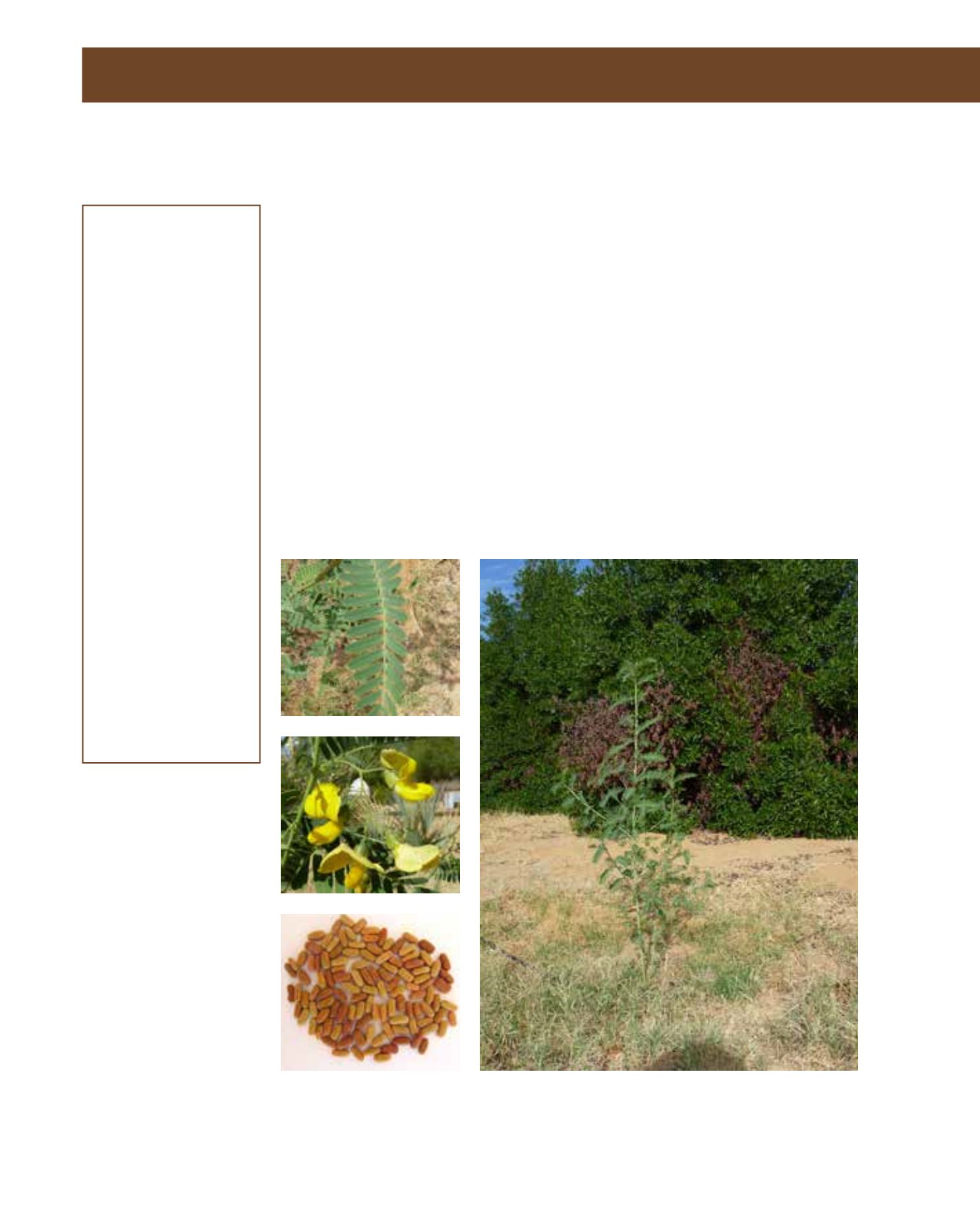

GENERAL
Origin
:
sub-tropical,
tropical
Vigour
:
normal growth
rate, fairly fast
growing, fast
growing
Humidity
:
semi-arid, semi-
humid
Propagation :
sowing and
pricking out
Maintenance :
low
CONDITIONS
Urban climate :
vulnerable
Dessication :
resistant
Stagnant water :
resistant
Irrigation
:
low
Salinity/ppm :
very high (8000
ppm)
Hardiness
:
0°C
SHAPE
Type
:
tree, shrub
Height
:
2 m-8 m
Spread
:
1.5 m-6 m
Foliage
:
deciduous
FLOWER
Colour
:
bright yellow
Size
:
10 cm
Period
:
April - June
FRUIT
Type of fruit :
pod
Fruit size
:
30 cm
In northeast Africa, this shrub may be encountered in dry riverbeds and swamp banks along
streams. The Egyptian Rattle Pod adapts to its environment by growing shrubby, as a multi-trun-
ked tree or as specimen with a single stem. Mature plants range between 2 and 8 metres in size.
Its deciduous foliage is pinnately compound, some 18 cm long, with many pairs of oblong leaf-
lets which measure about 2 cm in length. Attractive bright-yellow flowers are borne in racemes
mainly in spring, when humidity and warmth indicate good conditions both for pollinators and
for the shrub. In its tropical homelands, this plant produces flowers when the rain periods start.
This species flowers in deep yellow, white and in intermediate shades. After the pea-shaped blos-
soms are pollinated, long, narrow pods develop containing up to 50 seeds each. As with other
leguminous plants, the Egyptian Rattle Pods improve the soil by fixing nitrogen and adding
humus. Their foliage is used as green manure and as forage for livestock. For its attractiveness
and multiple uses, this species has long been grown beyond its native habitats, spreading widely
in Africa and Asia. It is resistant to stagnant water and poor soil conditions including alkalinity
and high salt content. Drought will lead to dormancy. Sowing is the most appropriate method of
propagation, but the hard, bean-like seeds need some encouragement through scarification. Since
it is widely adaptable and tolerant of adverse conditions, this shrub can be integrated into almost
any landscape situation.
283
Sesbania sesban,
Fabaceae
Egyptian Rattle Pod,
nowm, sasban
















